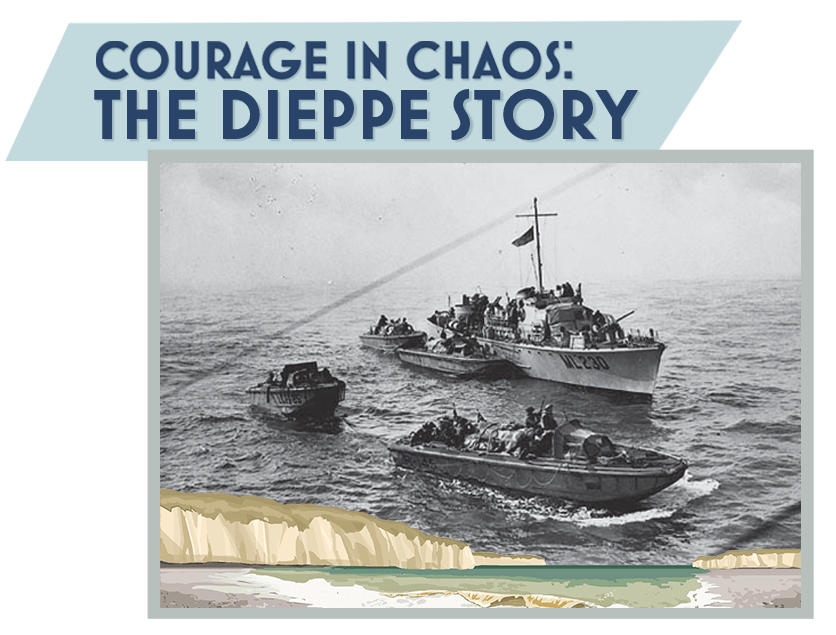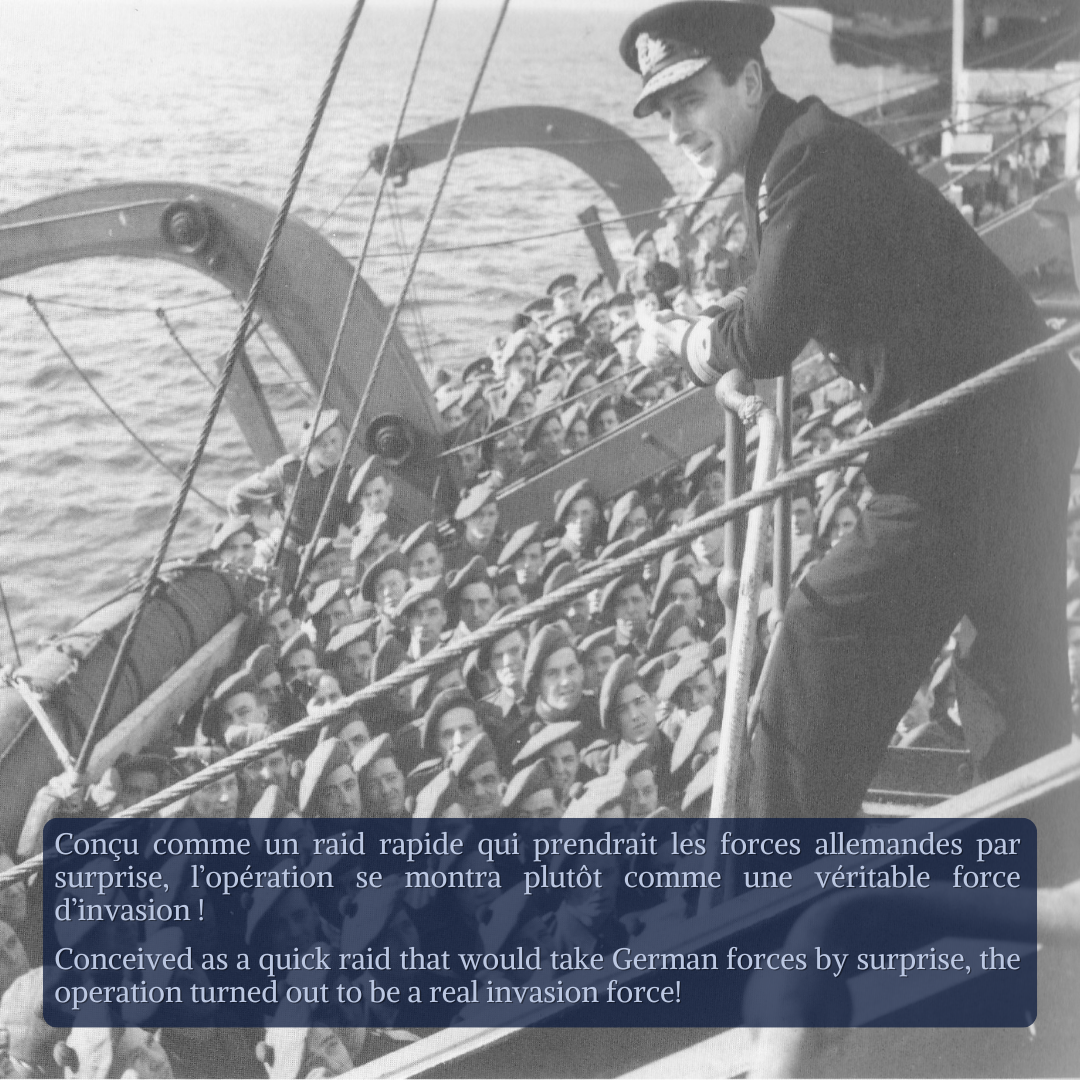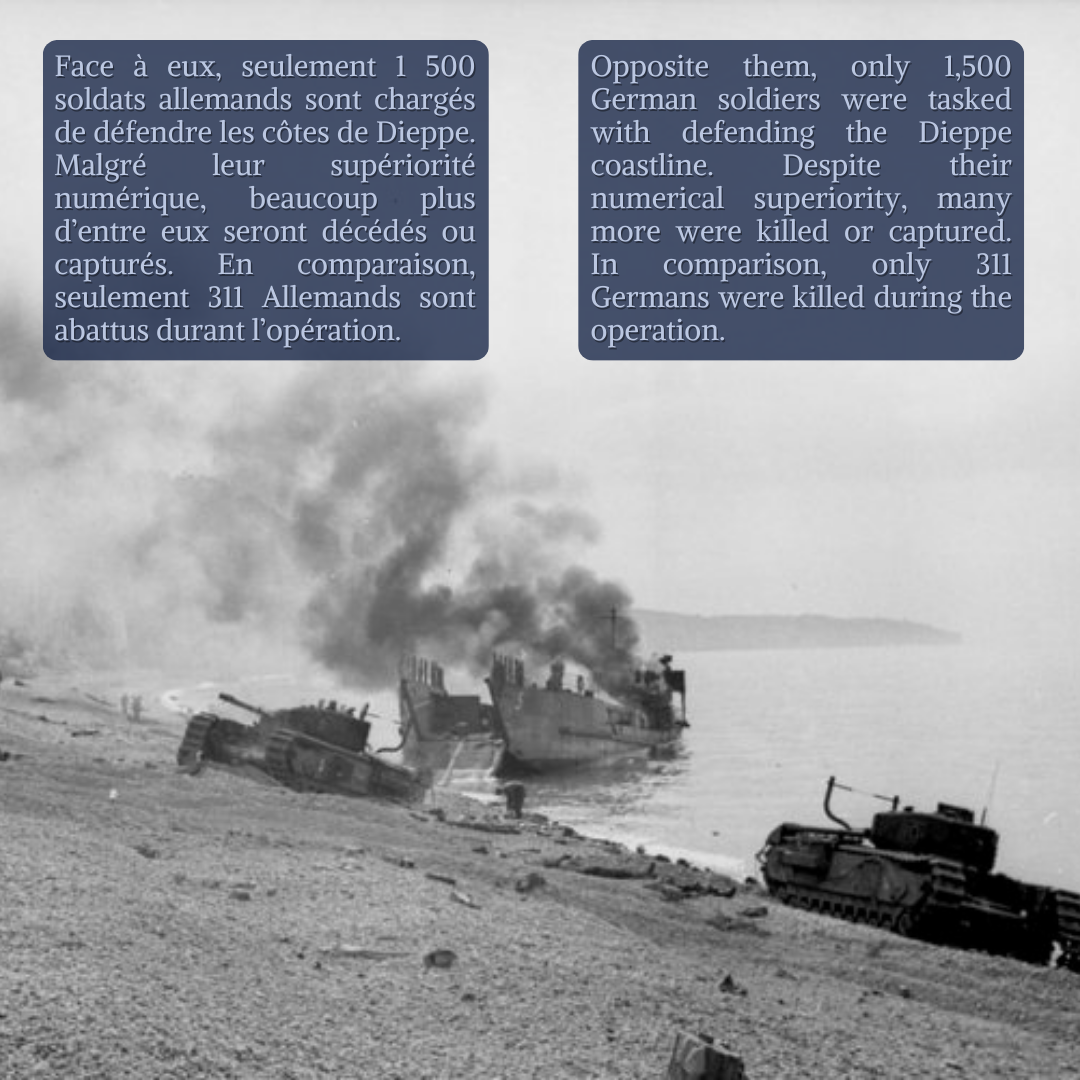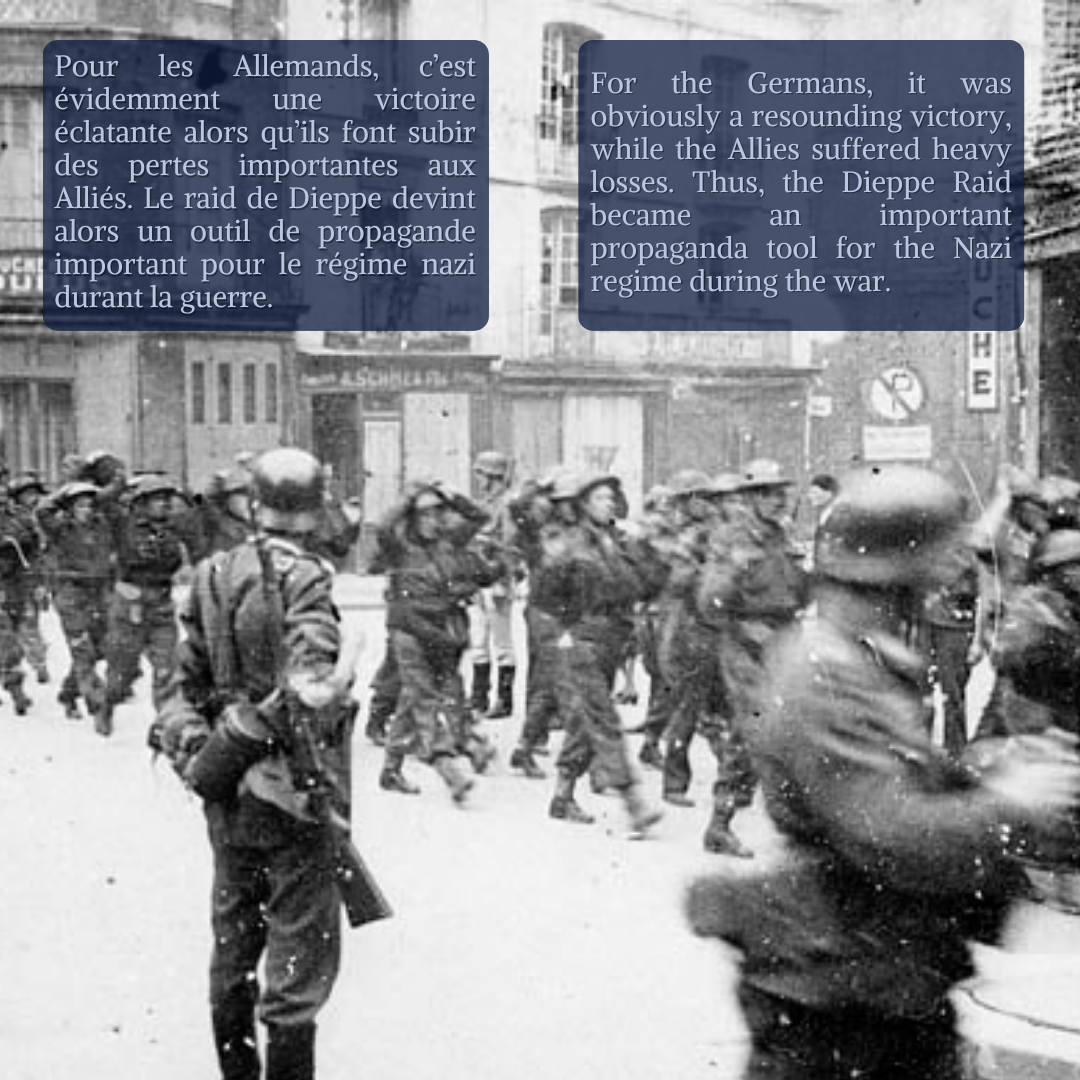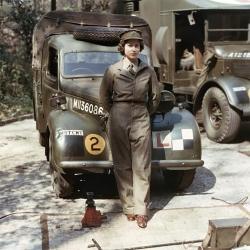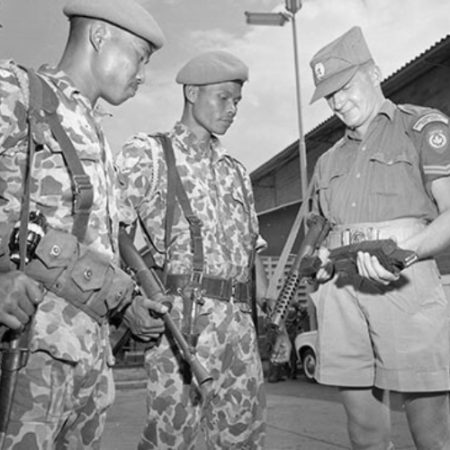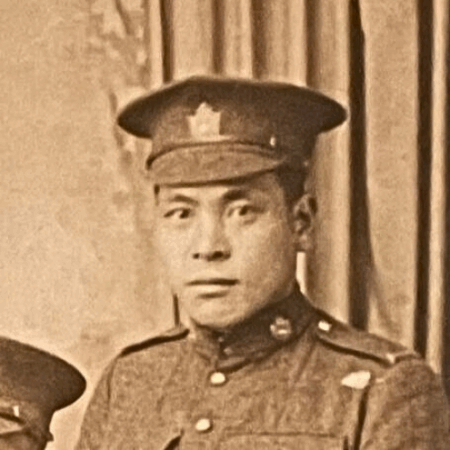Dollard Ménard is perhaps one of the best-known Quebec soldiers and one of the most important commanders in the history of the Fusiliers Mont-Royal. During the Dieppe Raid, he was wounded five times as he led his men into battle. Despite his injuries during Operation Jubilee, Major Ménard continued to serve in the Canadian army for many years. Learn more about his career, from Dieppe to Quebec, in this article!
Born on March 7, 1913 in the small village of Notre-Dame-du-Lac in the Bas-Saint-Laurent, he studied at the Académie de Québec and earned his degree from Université Laval. In 1932, he joined the army and attended the Royal Military College of Canada, one of the oldest military institutions in the country. At his graduation in 1936, he received his commission in the Royal 22e Régiment but waited two years for his first overseas mission, which was to India.
In 1936, the Pashtun nationalist Mirzali Khan organized a rebellion from the border between British India and Afghanistan against the Indian colonial government and the British occupation forces. There, from 1938 to 1940, Dollard Ménard served alongside the Indian army in his first combat forays. The young soldier then stayed in Asia and patrolled the China Sea with the British Royal Navy. Anticipating growing tensions between Japan and the British Empire, Dollard Ménard even boarded and inspected a Japanese ship.
At Dieppe
In 1942, at the age of 29, Dollard Ménard was promoted to lieutenant-colonel and sent to Great Britain to lead the Fusiliers Mont-Royal. Replacing commanding officer Paul Grenier, Dollard Ménard’s goal was to straighten up the FMR and get them combat-ready just four months before Operation Jubilee. After evaluating the regiment from top to bottom, Dollard Ménard made major changes to prepare his soldiers for the coming months. Drawing from his training and combat experience, he came up with simulation exercises, or battle drills, to prepare the regiment men for actual war conditions. He dusted off many vehicles and weapons stored in the warehouses so that they could be repaired and used for training.
On August 19, 1942, the lieutenant-colonel accompanied his regiment to Dieppe. On the White and Red Beaches, the task of the FMR was to support the first wave of soldiers aiming to capture the German positions. After doing so, they were supposed to serve as reinforcements and help the infantry already on the ground. However, the raid was a complete disaster and the Germans had no problem stopping the men from the first wave. Due to a miscommunication that the beach was secure, the FMR were also sent to the slaughter. This was when Dollard Ménard was wounded five times by German fire. As he explained:
“I think I had only taken three steps when I was hit by a bullet for the first time. They always say you get shot by a bullet. It’s not true. That’s false. A bullet hits you like a hammer. At first, you don’t feel the pain. It shakes you so badly that you’re not sure what hit you, or where it hit you. The first bullet that hit me struck my right shoulder and knocked me to the ground. […] During that time I was lying on the beach, exposed to enemy fire. Then I was hit a second time and I felt like I was bursting all over and I wondered if I was still in one piece. […] I had to control myself in order to continue to lead my troops rather than to start shooting all over the place. It was while taking the parapet that I was hit for the third time, this time in the right wrist. Normally, a high-caliber bullet bursting through your wrist is supposed to knock you down completely, but for some inexplicable reason I managed to keep moving. Within an hour, we had taken control of the beach. But there were still a few German snipers hidden here and there and one of them hit me as I tried to leave the beach and get to the outskirts of town. This time it hit me in the right leg, above the knee. Despite this, I was still eager to get to the streets of the town that some of my men were starting to infiltrate. The last bullet hit me just below the right ankle, pinning me down for good.” (Pierre Vennat, Dieppe n’aurait pas dû avoir lieu, Montréal, Éditions du Méridien, 1991, pp. 71-72).
Fortunately, his men were able to bring him back to a British ship near the beach. Dollard Ménard survived the raid and was the only commander deployed at Dieppe who returned to Great Britain.
His post-Dieppe career
Despite his wounds, the lieutenant-colonel continued to participate in the war effort by leading the Hull Regiment in securing Kiska Island (which had been occupied by the Japanese army) and commanding the Valcartier training base. Dollard Ménard also continued his military career long after the Second World War. In 1947, on behalf of the newly formed United Nations, he returned to India to participate in a cease-fire agreement following the first Indo-Pakistani war. He then went to Paris, where he served as a military attaché for the Canadian Embassy until 1951.
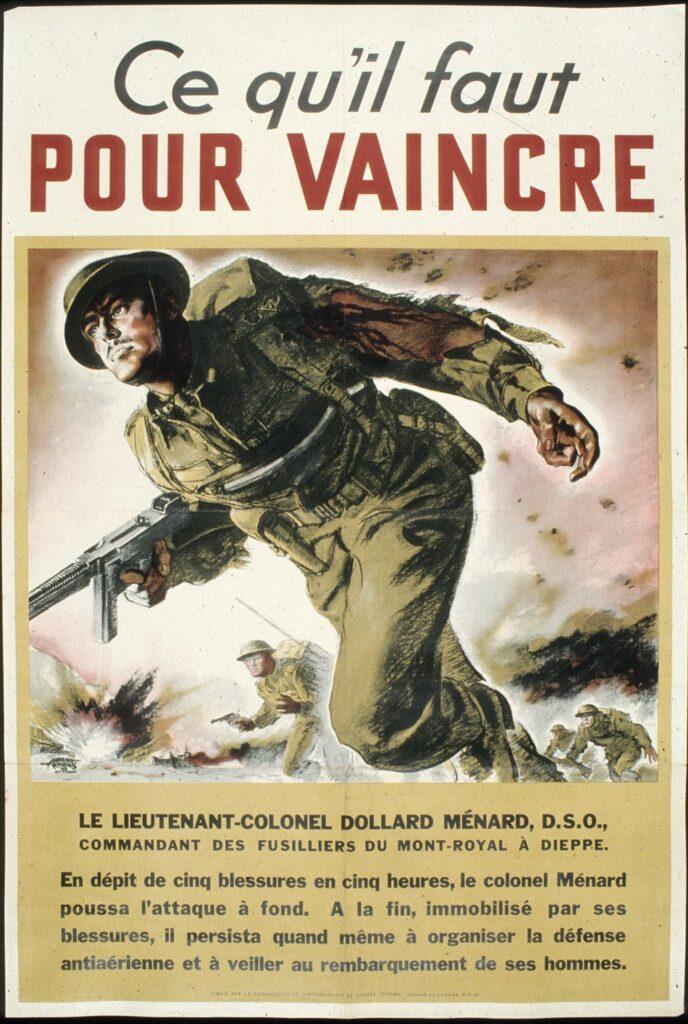
Promoted to brigadier general a few years later, he commanded the eastern Quebec military area from 1958 until his retirement. Even after he retired, Dollard Ménard was a well-known public figure in Quebec and made many remarks in the media. However, his positions were not without controversy. In 1980, for example, he stated that he was in favour of the Quebec independence referendum, becoming the only high-ranking officer in the Canadian army to declare himself a sovereigntist. Finally, after a full life, he passed away in 1997.
Article written by Julien Lehoux for Je Me Souviens. Translated by Amy Butcher (traductionsamyb.ca).
Sources:
- “Brigadier-Général Dollard Ménard“, Musée régimentaire – Les Fusiliers Mont-Royal (in french).
- “Brigadier général Dollard Ménard (1913-1997)“, Le Québec et les Guerres (in french).
- “Dollard Ménard (1913-1997)“, Ordre National du Québec (in french).
- “Lieutenant-Colonel Dollard Ménard“, Musée régimentaire – Les Fusiliers Mont-Royal (in french).
- “Ménard, Dollard“, Grandquebec.com (in french).
This article was published as part of our exhibition on the Dieppe Raid: Courage in Chaos. Visit our exhibition to learn more about the history of the Canadian who participated in the tragic Dieppe Raid!
